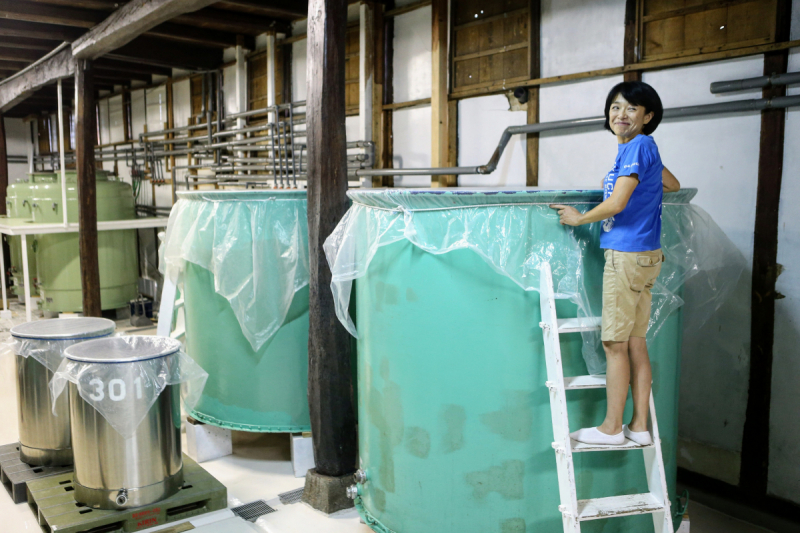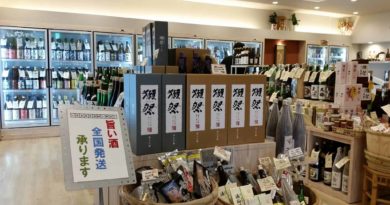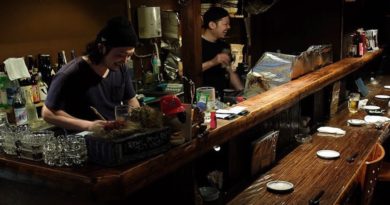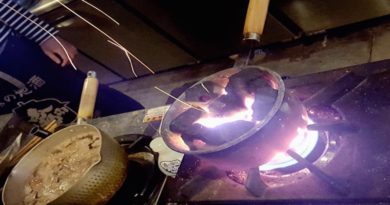Talking sake with master brewer, Miho Imada
A Story of Pride and Passion
“We evaluate each grain of rice, we supervise the brewing process on a 24-hour basis without sleeping, and we never ignore our mistakes. We feel great pride in the taste we have protected for generations and that makes our sake special. Without this sake, my life would be incomplete.”
Fukucho is a small sake brewery located in Akitsu [安芸津], Hiroshima that began operation way back in 1868. Hiroshima is one of Japan’s three pre-eminent sake-producing areas alongside Kyoto and Kobe, and Akitsu is the birthplace of Hiroshima sake. The small port town on the coast of the Inland Sea has produced some of Japan’s most skilled master brewers. These tōji, as they are called, conquered the difficult challenge of producing high quality sake using Hiroshima’s soft water, and the term “Hiroshima Tōji” is synonymous with “Akitsu Tōji”.
Here, Miho Imada who is both owner (kuramoto) and tōji at Fukucho she shares the story of her journey to sake master and gives us some tips on getting into sake.
Did you ever think you would take over your father’s sake brewery?
Never! Growing up in the mundane countryside, I always dreamt of studying and working in the big city, so that’s what I did. I completed my university degree in Tokyo and became involved in the effort to revive traditional Noh theatre songs the lyrics of which remained but melodies were lost. It was all very exciting because Japan was in the midst of the “bubble economy”. However, when the bubble burst and funding for our projects dried up, I became financially troubled. That was when I started to think about the work opportunity back home at my father’s brewery. Lucky for me, none of my four other siblings were interested in pursuing a career in sake so my father was very grateful that I, the eldest child, was willing to take over Fukucho. I was 33 years old then, and thus began my relationship with sake.
How was it when you first started?
It was a cycle of failures upon failures. I remember how disappointed I felt when I drank our sake in Tokyo for the first time. Although the scent and taste of sake is supposed to become richer as the quality and price rises, but our sake varieties all tasted the same. But it is especially challenging to brew sake here in Hiroshima because the water is soft. Soft water has low mineral content, which makes it susceptible to contamination because it ferments very slowly. Consequently, it requires much stricter supervision than sake brewed with hard water in areas such as Kobe. My father and other tōji taught me very patiently, but I didn’t have the natural talent that some do, so I often got frustrated with myself for not meeting my own standards.
How were you able to persevere as a sake master despite the many failures?
Even now after 24 years, I am not fully satisfied with my sake and that is exactly what keeps me going. People have watched me fail and told me to just quit or have someone else take over, but I could never allow that. I owe it to myself and to my family to pursue the tradition that runs in my blood. But more importantly, I keep doing what I do because I love it.
What is it that you love about brewing sake?
With time, I have come to appreciate the process because I feel it reflects the values of what it means to be Japanese. Take, for example, the production of the koji mould that is perhaps sake’s most important ingredient. If you get the koji right, everything else usually works out, but it’s almost impossible to make good sake if you don’t.
It’s a long process which is adjusted according to the quality of that particular season’s rice. For 48 hours, the team constantly monitors the batch of rice on which the mould is grown, as a whole, but also grain by grain, making tiny adjustments that will balance the flavor. This is all done using traditional wooden implements.
The process requires immense concentration for an extended period, with an attention to detail that seems to me to be an important characteristic of traditional Japanese shoku-nin work-ethic. In fact, I often think, only the Japanese would be crazy enough to put themselves through such hardship! Although it may, in the end, make only make a minor difference to the customer whether we assess each grain or not, it matters to us because it’s the extra step we take to achieve the taste we are proud to serve. That willingness to invest additional time makes me very proud.
What is the most important aspect of sake brewing?
Teamwork! Winter is the busiest and most vital season for brewing sake. As a team of around tōji, we must work, sleep and eat together, maintaining constant supervision of sake while executing individual tasks. Even if we produce one or two tanks of great sake, that is not good enough. It is important that we keep producing high-quality sake consistently, year on year, so we must sustain the strong team dynamic. Being a team also means pointing out each other’s weaknesses. In order to create the taste we seek, we must first understand what it is we are creating. By being very strict with each other, we are able to challenge our skills and enrich the flavor of our sake.
What makes Fukucho sake special?
Of course the use of soft water and local Hiroshima rice, but what really makes the difference is our ability to produce the Fukucho taste we have protected for generations. In Akitsu, the greatest compliment you can give someone’s cooking is to say it has ko-aji. It refers to a umami that is not bold, but subtle. I like to compare it to a sound that can only be heard when you choose to listen. The people of Akitsu is steeped in this culinary tradition and it is a sensibility that has informed the way we make sake. This is the kind of concept upon which our sake is made. It is exciting because it takes time to truly appreciate. That is something only we can do which makes our sake special.
What is “sake” to you now?
Well, surely without sake my life would be incomplete. The mere fact I was born in a major sake town makes me invariably bonded to Japanese sake. It’s a connection that has always existed, from even before I was born.
Is it particularly challenging to be a woman in the sake industry?
No. When I first joined 24 years ago, there were 7 people working at Fukucho including 2 women. Although the team was led by a male tōji, the women were immensely relied upon and equally as respected due to their talent and hard work. Come to think of it, Hiroshima tōji have never really had an issue with women being involved. Even when I joined, everyone here was fully supportive of me because unfortunately, less and less young people are choosing to pursue their family’s traditional work. It is true though that you may sometimes read that Fukucho has a feminine taste. But that is because Hiroshima sake is brewed with soft water, which is thought to create a certain gentleness and subtle strength that reflect some “feminine” characteristics. Contrarily, sake brewed with hard water in regions including Kyoto is characterized as more “masculine” because it tastes more firm and robust.
What type of foods match Fukucho sake best?
I would recommend the fish and oysters as well as dishes made with leafy vegetables local to the Seto Inland Sea and near Akitsu, in particular. Any foods sourced from the same soft water that is a critical ingredient in our sake is a good match.
Is Fukucho sake available overseas?
Yes. In recent years I have participated in various events overseas to showcase our sake. In addition to seeking popularity in America and Europe, I am hoping more and more Chinese restaurants will serve sake because their meals revolve around a rice-based umami, which makes it a natural match with Japanese sake. It will surely spread the appeal of sake to a much wider audience if we manage to raise its popularity in Chinese restaurants around the world. However, my priority is to have more young people in Japan like you enjoy sake. Our society is changing and less young people are interested in drinking traditional sake, but I hope to change that gradually by emphasizing its historical significance as well as unique umami.
What advice do you have for novice sake-drinkers like me?
I advise first timers to take three or four sips of several types of sake at once to compare flavor, distinguish the differences and find the one you prefer. I also recommend you ask about the origins and ingredients of the sake to gain insight of each type. In small restaurants, bars or izakaya, sake is typically served in very small cups called o-choko but I recommend you ask to have it poured in a larger glass, even a wine glass, if available. A wider glass allows you to appreciate the aroma and taste of the sake, allowing you to experience it fully. Although often compared to wine, sake is a completely different drink, so I recommend newcomers approach it without preconceptions and appreciate it for what it is on its own merits, rather than comparing it to other drinks.
This interview originally appeared in print in the Autumn 2017 edition of the GetHiroshima Mag.






